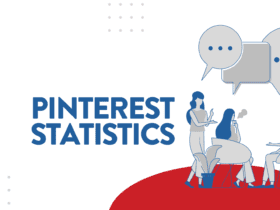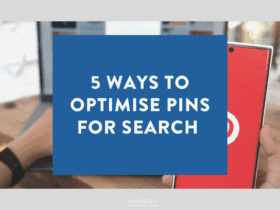How exactly does the Pinterest algorithm work?
Optimise your pins on Pinterest and watch your engagement levels and click-through rates go through the roof.
As of the second quarter of 2021, Pinterest had 454 million monthly active users worldwide. If you still think it is a place where mums find recipes and find home decor inspiration, you’re mistaken.
Although it is often referred to as a social media platform, Pinterest is not the same as Twitter, Instagram, or Facebook; it’s a visual search engine.
Pinterest uses algorithms to select what content users see, but Pinterest’s algorithm’s inner workings are more open than other networks. This gives businesses a significant advantage in terms of attracting attention to their content.
Here are four main factors that influence ranking on Pinterest.
1. Domain quality
High domain quality is a great way to optimise your pins.
Pinterest evaluates the quality of your website based on its domain quality. Pinterest may detect the popularity of pins that came from your website using the algorithm. Pinterest will view your website as a source of high-quality material if your pins become more popular.
To improve your website’s domain quality ranking, convert your Pinterest profile to a business profile, use rich pins, pin often on your Pinterest account and create and pin high-quality content.
2. Pin quality
The popularity and engagement level of your pins are frequently used to measure pin quality. The more people who click through, save or comment on your pin, the higher it will rank in terms of quality.
For click-worthy pins, ensure you are using high-quality images appealing to the eye, add text on your pin that will entice the audience, add your logo and add a link back to your website.
You want to optimise your pins? Make sure they’re quality.
We’ll walk you through all the steps you need to take your Pinterest presence to new heights, from filling out important information to breaking down your content.
3. Pinner quality
Your effectiveness as a Pinterest content developer is measured by pinner quality. It keeps track of how often you pin, how many people interact with your pins, and how much you interact with others.
Pinterest not only keeps track of the historical success of all of your pins, but it also assigns you a score depending on what you’re re-pinning. Re-pinning low-quality content will lower your score, and re-pinning high-quality content will increase it.
Pinterest’s latest algorithm tweak encourages users to share fewer, higher-quality pins rather than a vast number of low-quality pins. Optimise your pins by focussing on quality pinners and quality content.
4. Topic relevance
Choosing keywords that are relevant to what you’re posting on Pinterest is key if you want to optimise your pins.
Keywords sprinkled throughout the content are utilised to determine what the pin is about and when it will appear in searches. Pinterest calculates keyword relevancy in the same way that Google and other search engines do.
To improve the relevancy of your pins, use the Pinterest search query to conduct keyword research and use keywords in your Pinterest boards, board descriptions, and pins.
Enjoyed this article? Enter your email below for social media tips & tricks delivered to your inbox every Monday morning.








LET’S CONNECT